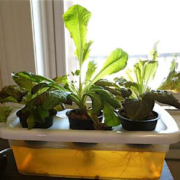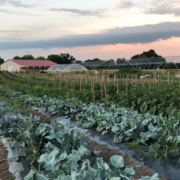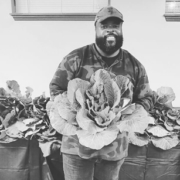How About Growing Your Own Food During the COVID-19 Restrictions?
 Print This Post
Print This Post
 By Andrew Coggins, NCAT Rocky Mountain West Regional Director
By Andrew Coggins, NCAT Rocky Mountain West Regional Director
We are all used to popping down to the local supermarket or garden center to buy potted plants or flowers to liven up the house, and to a certain degree, we still can. But as we are spending more time at home than we could have imagined a few months ago, why not also consider buying plant starts or seeds and growing your own food? My family and I grow food in our garden each year because we enjoy both the activity and the healthy food. But it also increases our self-sufficiency, particularly in challenging times like the current pandemic we’re experiencing.
In addition to growing something healthy to eat, gardening provides an educational opportunity for those of you with children or young adults at home, while schools and universities are closed, and during summer when school is out of session. You can grow plants from seeds in small flower pots, but there are other options out there to try – especially for those of you who are either waiting for the weather to warm up to plant outside, or have no access to a garden.
Options for Indoor Growing
While you can’t go wrong planting things like lettuce, carrots, strawberries, peas, or herbs, why not also consider something more exotic or different? A few examples are illustrated below.
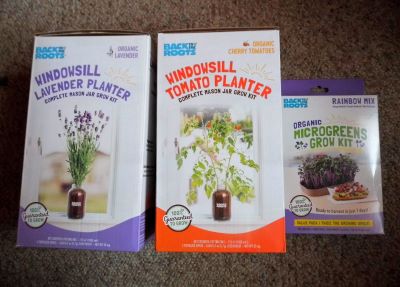
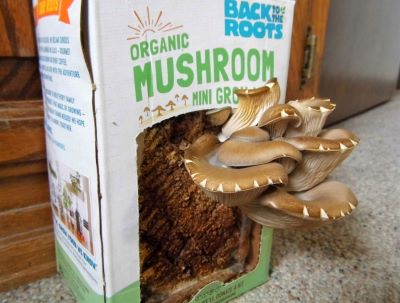
These are complete kits for growing microgreens, herbs in pots, mushrooms, lavender, and tomatoes. And there are many more such kits. Some are organic, and some are not, but all are educational! In addition to these kits, for those of you with no access to a garden, there are also many hydroponics systems on the market now, which enable you to grow plants and vegetables all year-round in the controlled environment of your own house, such as those illustrated below. Most come complete with everything you need to start growing herbs, greens, tomatoes, and peppers, among other things. Another advantage of these systems is that you can go down to your local store and select your own seeds if you wish.
When growing vegetables and fruit in the garden, open beds, greenhouses, or high tunnels, it is important to consider your location and the cold hardiness rating of the plants you want to grow, which will largely dictate the varieties you actually can grow, and also where you can source the supplies from.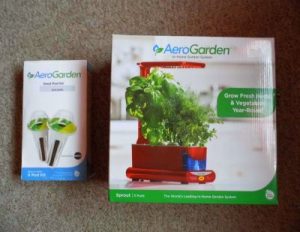
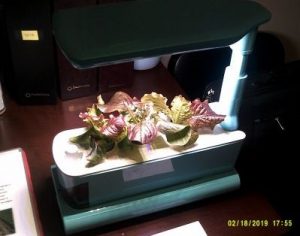
This usually involves specialist seed suppliers or possibly local nurseries and garden centers. Local stores tend to stock a lot of seed that is not really suitable for cold climates such as our zone 3. But with these small hydroponics systems based in houses and apartments (and therefore in a controlled climate), you can try any of the seed selections available in your local store. The systems are inexpensive to run and grow plants quickly, so, if something does not work, you can simply try something else. Experiment and have fun!
Feeding Your Indoor Plants
I mentioned previously that some of these products are organic and some are not. If you have purchased non-organic products and wish to grow them in a more sustainable way other than using manufactured nutrients, you have options. At NCAT, we are experimenting growing these plants hydroponically using readily available forms of nutrients that are easy to make and affordable. Though commendable, manufactured organic nutrients can be expensive and not always easy to source. We are experimenting with growing lettuce, tomatoes, and basil inside our building (and in a larger structure in a greenhouse) in water and compost tea. This is derived from solid compost that is strained like teabags, to extract the nutrients from the compost in liquid form that can then be used in hydroponics systems as a completely safe and cheap alternative to purchased organic nutrients. Just stack one to two buckets of solid compost (with holes drilled in the bases) on top of an empty bucket, pour water into the top bucket and let it percolate through to the empty bucket as shown below. This is not an exact science, but if you wish to make your tea stronger, then pour the liquid collected in the bottom bucket through the bucket with solid compost a second time. The picture below on the right illustrates lettuce growing in a plastic tub with compost tea added and a very small air pump aerating the water through an air stone – nothing more!
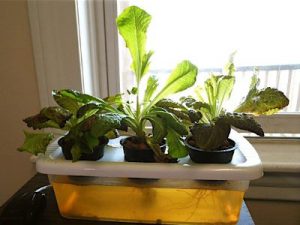
There are many options out there for those of you who wish to start growing your own food in fun and imaginative new ways that take up very little space. If you want to learn more about these mini-hydroponics systems in detail, read my previous blog, Small Hydroponics Experiment Comparing Two Systems.
In addition, check out ATTRA’s other resources related to small-scale farming.
Andrew Coggins is Director of NCAT’s Rocky Mountain West office in Butte, Montana. He can be reached at (406) 494.8638 or andrewc@ncat.org.
This blog is produced by the National Center for Appropriate Technology through the ATTRA Sustainable Agriculture program, under a cooperative agreement with USDA Rural Development. ATTRA.NCAT.ORG.

